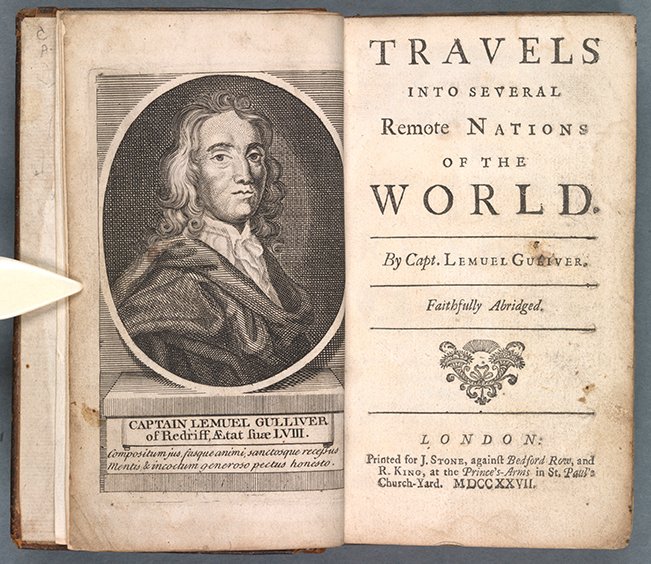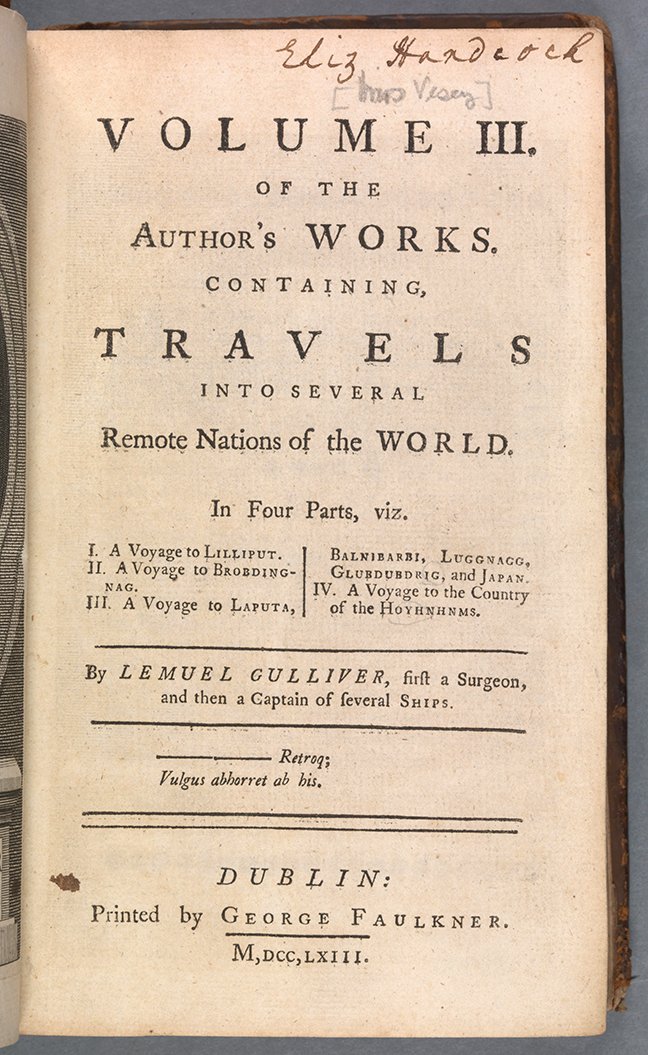Home / History / Social History / The History of the Book in the Early Modern Period: 1450 to 1800 / Looking at title pages: Gulliver’s Travels
This article is from the free online
The History of the Book in the Early Modern Period: 1450 to 1800


Reach your personal and professional goals
Unlock access to hundreds of expert online courses and degrees from top universities and educators to gain accredited qualifications and professional CV-building certificates.
Join over 18 million learners to launch, switch or build upon your career, all at your own pace, across a wide range of topic areas.

 Fig 1. Gulliver [i.e. Jonathan Swift], Travels into several remote nations of the world. In four parts (London, 1726), title page. © The Board of Trinity College Dublin
Fig 1. Gulliver [i.e. Jonathan Swift], Travels into several remote nations of the world. In four parts (London, 1726), title page. © The Board of Trinity College Dublin
 Fig 2. Gulliver [i.e. Jonathan Swift]. Travels into several remote nations of the world (Dublin, 1726).
Fig 2. Gulliver [i.e. Jonathan Swift]. Travels into several remote nations of the world (Dublin, 1726).
 Fig 3. Gulliver [i.e. Jonathan Swift], Travels into several remote nations of the world. In four parts… (Dublin, 1756), title page and frontispiece. © The Board of Trinity College Dublin
Fig 3. Gulliver [i.e. Jonathan Swift], Travels into several remote nations of the world. In four parts… (Dublin, 1756), title page and frontispiece. © The Board of Trinity College Dublin
 Fig 4. Gulliver [i.e. Jonathan Swift], Travels into several remote nations of the world. (London, 1727), title page and frontispiece. © The Board of Trinity College Dublin.
Fig 4. Gulliver [i.e. Jonathan Swift], Travels into several remote nations of the world. (London, 1727), title page and frontispiece. © The Board of Trinity College Dublin.
 Fig 5. Jonathan Swift, The Adventures of Capt. Gulliver, in a Voyage to the Islands of Lilliput and Brobdingnag (Darlington, 1773), title page. © Google Books
Fig 5. Jonathan Swift, The Adventures of Capt. Gulliver, in a Voyage to the Islands of Lilliput and Brobdingnag (Darlington, 1773), title page. © Google Books
 Fig. 6 Gulliver [i.e. Jonathan Swift], Volume III. Of the Author’s Works. Containing Travels into Several Remote Nations of the World (Dublin, 1763), title page.
Fig. 6 Gulliver [i.e. Jonathan Swift], Volume III. Of the Author’s Works. Containing Travels into Several Remote Nations of the World (Dublin, 1763), title page.






